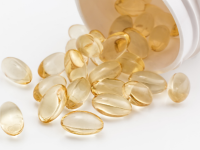
J. David Legan, PhD
Director of Science
David earned his Ph.D. in Food Technology from the University of Reading in the UK by modeling the ecology of mixed microbial populations, and then moved to Campden BRI in a variety of microbiological food safety research and client service roles. During that time, he was project lead for the Bacillus component of the UK’s pathogen modeling program. He moved again to Nabisco Research in New Jersey where he ran the corporate microbiology lab and developed a program of preservation technology development and microbial modeling. After the Kraft Foods acquisition, he moved to Chicago to work on Food Safety and Preservation research, and through modeling and validation studies:
- Optimized Oscar Mayer’s use of lactate and diacetate and their naturally cultured alternatives as Listeria-control agents in Ready to Eat meats
- Specified process conditions central to Oscar Mayer’s commercial launch of High Pressure Pasteurization of naturally cured RTE meats
David had responsibility for the Kraft cultures R&D group, developed a partnership to explore microwave sterilization leading to several patents, and led a program that developed an internal proprietary natural antimicrobial commercialized in several Kraft products. Technologies from his group supported approximately $4 billion in annual sales.
After years as a microbiology "client", he is now back in the "provider" role as Director of Science at Eurofins Microbiology Laboratories, Inc., by way of the Covance Food Solutions group based in Madison, WI, which he joined in 2016. In this role, he ensures appropriate method validation, explores new testing technologies, and fields multiple complicated food microbiology questions.
Products that his team has evaluated or developed and launched include:
- The 3M MDS platform in the Madison microbiology laboratory
- Flow cytometry for enumeration of probiotics
- Strain-level confirmation of probiotic identification using the polymerase chain reaction (PCR)
- Next-generation sequencing using the Oxford Nanopore Technologies GridION sequencing platform for microbial identification and microbiome analysis
Below are resources from David:
In the world of dietary supplements and food testing, unexpected results like failed specifications, out-of-spec (OOS) results, or surprising contaminant detections can be unsettling, but they’re not uncommon. Here’s how to navigate the process when results don’t align with expectations.
When it comes to refrigerated and frozen foods, shelf-life testing isn’t just about timelines, it’s about protecting your brand, your label claims, and your consumer’s experience. In this Ask the Expert feature, Sam Wiesenfeld shares insights into the most common questions clients face when designing shelf-life testing protocols for refrigerated and frozen foods.
When it comes to dietary supplement testing, one seemingly small detail can have outsized consequences: specifying the correct vitamin form. Understanding and communicating the exact vitamin form in your product is not just a technical necessity, it’s a strategic imperative in ensuring accurate results, timely reporting, and regulatory compliance.
A supplement manufacturer added methylcobalamin (Vitamin B12) to a product, expecting to meet label claims. However, testing revealed only ~50% of the claimed amount, triggering an out-of-spec (OOS) result. Read to learn how Eurofins Supplement Testing resolved the unexpected results.
Switching oil sources, or developing a new product with an alternative oil, requires more than a label change. It demands a holistic view of how the oil behaves in your product, how it interacts with other ingredients, and how it holds up over time. Click to learn about the key considerations.
Protein analysis is typically based on a Nitrogen analysis and assumed factors to calculate protein. Since proteins are not the only source of Nitrogen, Protein analysis can be falsely inflated by a variety of ingredients and other food components. Check out this infographic to learn more about non-protein nitrogen.
The bar aisle is brimming with possibilities—and today’s consumers are more curious and discerning than ever. As expectations rise around flavor, texture, and ingredient transparency, brands have a unique chance to reimagine what a bar can be. This webinar explores the dynamic evolution of the bar category, especially protein bars, and reveals how thoughtful innovation can help your brand rise above the noise and truly connect with consumers. Originally Aired on November 5, 2025
As global demand for animal protein continues to rise, producers, distributors, and suppliers face increasing pressure to meet complex veterinary drug compliance standards. This webinar offers a practical roadmap for navigating the regulatory landscape governing the export of animal protein, with a focus on FDA and USDA requirements, international certification processes, and emerging trade dynamics.
The FDA and USDA are seeking public input to define ultra-processed foods (UPFs), aiming to shape future labeling, regulation, and consumer awareness. Learn how this RFI could impact food policy and public health.
Grain trading, especially in commodities like soybeans, relies on accurate lab analysis to determine quality and compliance. But when discrepancies arise between a supplier and a buyer, these disagreements can stall deals and generate costly conflict. That’s where referee testing steps in. Click to read about this crucial process that maintains trust and transparency.












